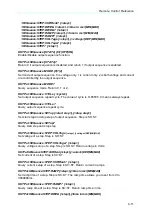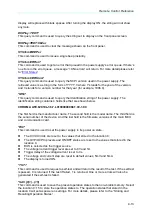
Remote Control Reference
4-3
4.1.6 SCPI Command Terminators
A command string sent to the power supply has to end with a <new line> character. The
message from the IEEE-488 EOI (end-or-identify) is analyzed as a <new line> character and
used to terminate a command string substituting a <new line> character. It’s also accepted
that a <carriage return> is followed by a <new line>. Command string termination always
reset the current SCPI command path to the root level. Generally, the <new line> character
has the ASCII decimal code of 10.
4.1.7 Common SCPI Commands
The GPIB (IEEE-488.2 standard) defines a set of common commands performing functions
like reset, self-test, and status operations. GPIB commands always start with an asterisk “*”,
consisting of four to five characters in length, and may include one or more parameters. The
command keyword is separated from the first parameter by a blank space. You can use a
semicolon “;” to separate multiple commands as shown below:
*RST; *CLS; *ESE 32; *OPC?
4.1.8 SCPI Parameter Types
The SCPI language defines several different data formats in order to be used in program
messages and response messages. Generally, these parameters are in numeric, discrete,
Boolean, and string.
Numeric Parameters:
Number-required commands accept commonly used decimal representations of numbers
such as decimal points and scientific notation. Some special numeric parameters like
MINimum, MAXimum, and DEFault are also accepted, as well as sending engineering unit
suffixes (V, A, or S) with numeric parameters. If you leave acceptable numeric values, the
power supply will round the input numeric parameters automatically. For example:
VOLT {<voltage>|MIN|MAX|UP|DOWN}
Discrete Parameters:
You can use discrete parameters to program settings that have a limited number of values like
BUS
and
IMM
. When querying, responses will return the short form in all upper-case letters
invariably. For example:
TRIG:SOUR {BUS|IMM}
Boolean Parameters:
You can use Boolean parameters to represent a single binary condition that is either true or
false. If it’s a false condition, the power supply will accept OFF or 0. If it’s a true condition, the
power supply will accept ON or 1. When querying a Boolean setting, the power supply will
return 0 or 1 invariably. For example:
DISP {OFF|ON}
String Parameters:






























